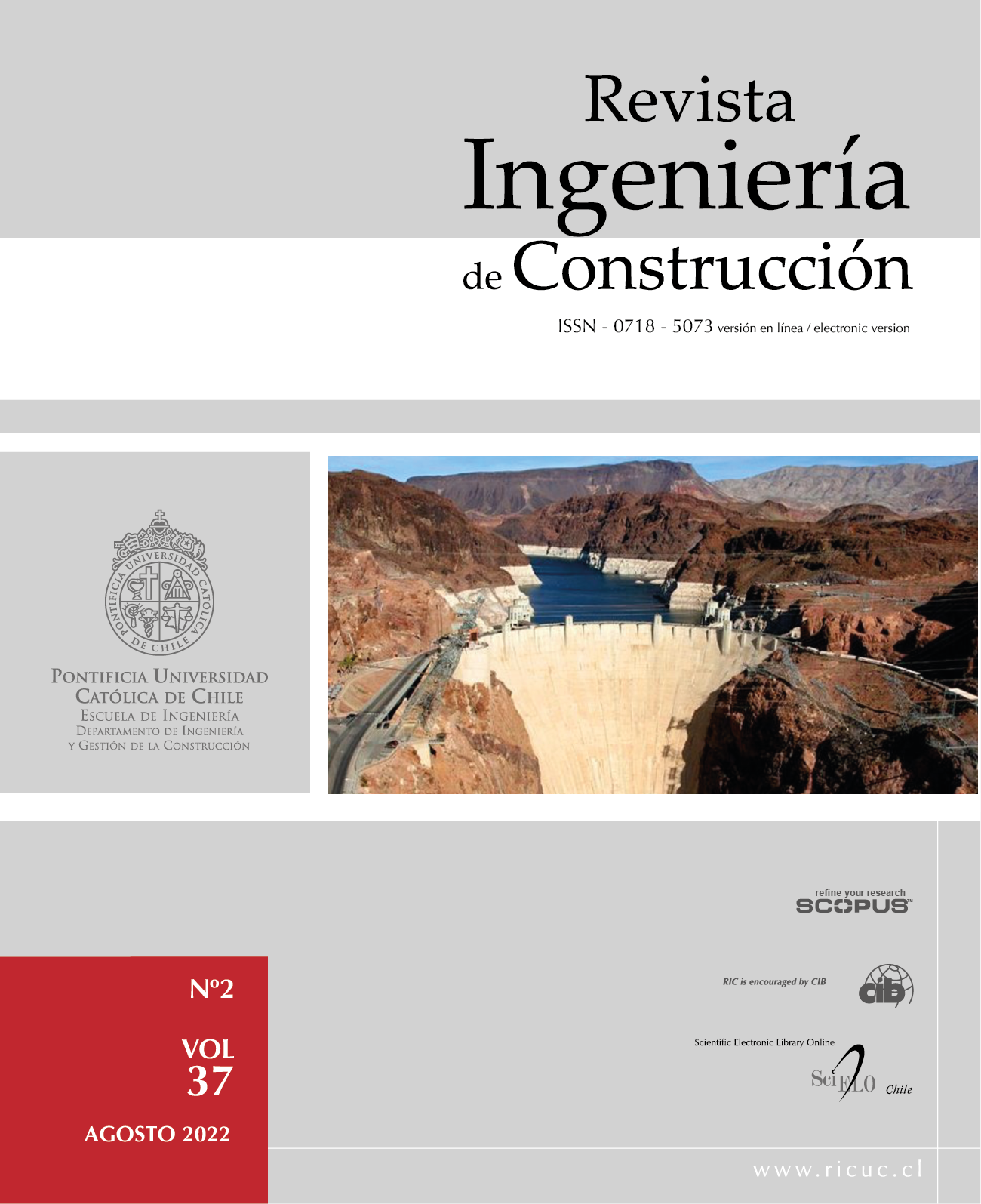Diagnosis of degradation state through non-destructive tests: case study of the public building of federal education institution
DOI:
https://doi.org/10.7764/RIC.00024.21Keywords:
Conservation, pathological manifestations, reinforced concrete, public buildings, preventive maintenance, non-destructive testingAbstract
Historically, public buildings are not importantly addressed in Brazil, resulting in several buildings dropped to the ruins and unnecessary acquisitions of new spaces by public institutions. The present study was carried out in a building part of the extinct industrial building of the Anglo fridge in Pelotas. The main objective was to evaluate state of degradation state through non-destructive tests in a case study of a public building of Federal Education Institution. Visual analysis, damage map, measurement of nominal coverings, sclerometry tests, silver nitrate spray and phenolphthalein test were performed. The building presents worrying deterioration levels, chlorides, and carbonation presence and several stains moisture. These facts lead concrete detachment, reinforcements corrosion and losses in slabs, beams, and pillars sections.Downloads
Published
2023-05-16
How to Cite
Silveira da Costa, V. ., Ibrahim Júnior, R. C. ., Azevedo de Azevedo, Ângela ., & da Silva Torres, A. . (2023). Diagnosis of degradation state through non-destructive tests: case study of the public building of federal education institution. Revista Ingeniería De Construcción, 37(2), 164–184. https://doi.org/10.7764/RIC.00024.21
Issue
Section
Case Studies
License

This work is licensed under a Creative Commons Attribution-NonCommercial-NoDerivatives 4.0 International License.

